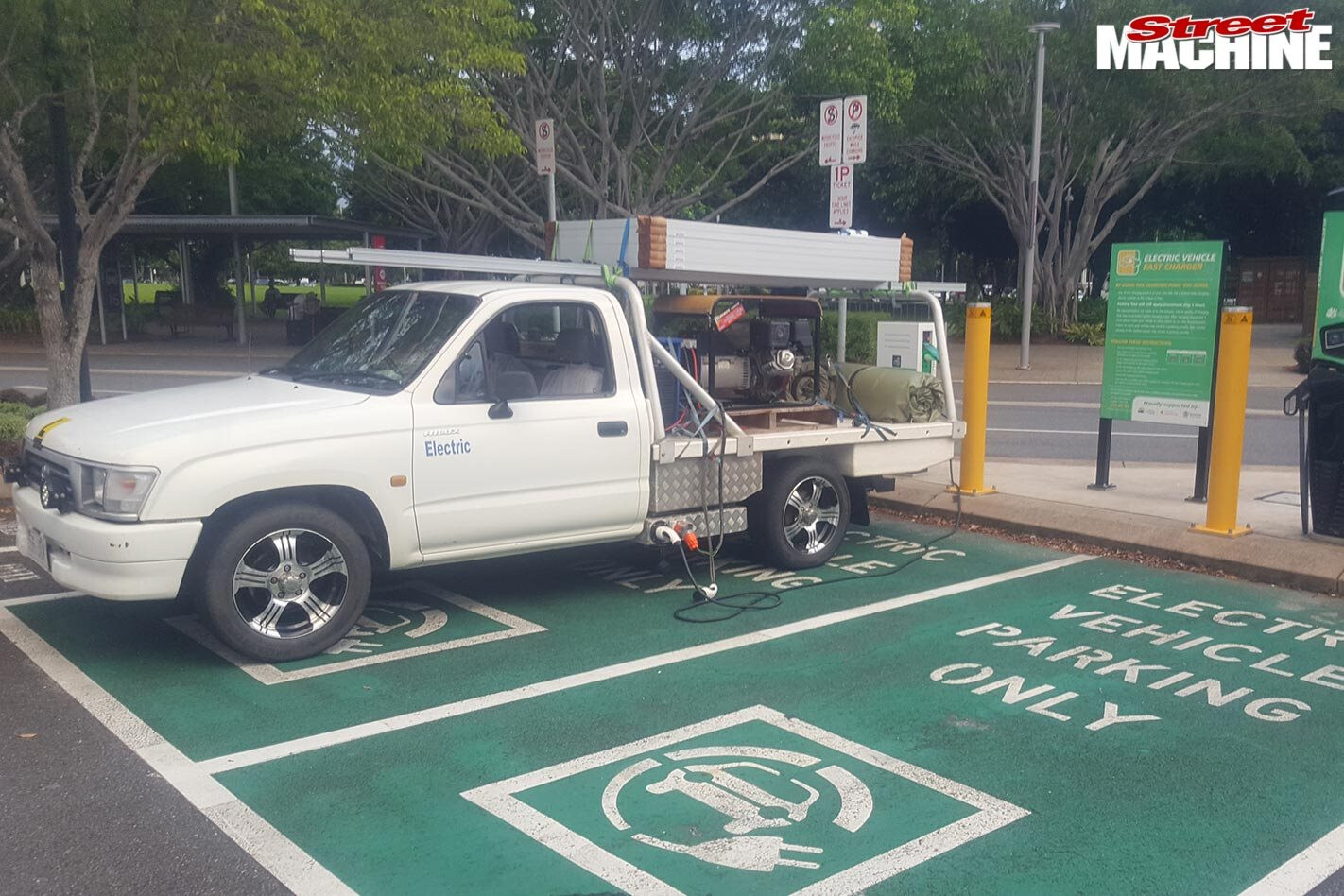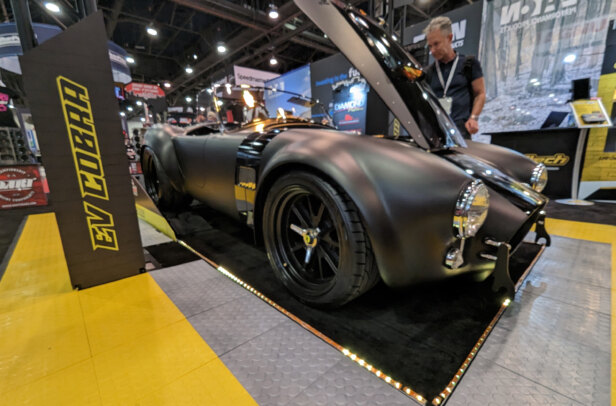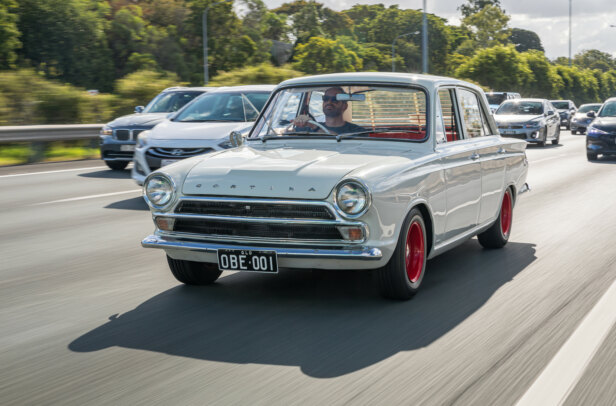THE popularity of electric vehicles (EVs) continues to increase, with a variety of manufacturers presenting electric cars to a market still learning how to choose one. You can also build an EV and, sure enough, I’ve now been asked by a client to engineer my first one: an ICV (Individually Constructed Vehicle) trike. So I had to deal with three engineering aspects at the same time: an ICV, a trike and an EV all in the one project.
This article was first published in the May 2020 issue of Street Machine
The only part that I was not experienced in was the EV aspect, so I had to learn the current regulations. Luckily I had a good client who knew his stuff, and the result of our cooperative efforts is an EV trike called T-Rev, registered and on the road. For my part, I read everything available to be able to assist him and ensure that the vehicle met the National Guidelines for the Installation of Electric Drives in Motor Vehicles. This is available for anyone to download for those interested in going a similar route.
The trike at the test track for the lane-change test
So this month I wanted to give you an overview of what you need to consider when constructing an electric vehicle. After all, it won’t be long before we start seeing EV street machines!
CURRENT MATTERS
NEEDLESS to say, building an EV is completely different to building a car with a regular internal combustion engine, but there plenty of rules to guide EV builders down the right path.
Most EVs will be hazardous voltage (HAZV) rated, which means they will operate above 60V DC; this is necessary to get higher power levels. Conversely, extra-low voltage (ELV) vehicles operate below 60V DC. Most will use batteries with non-spillable liquids and without discharge gas (e.g. lithium or NiMH) so that full sealing of the battery compartment can be avoided.
EV batteries are heavy, so they have to be restrained. The mountings must be able to withstand a 20 g-force frontal impact, 15 g side impact, 10 g from the rear and a vertical rollover impact of 10 g. For this reason, it is advisable to mount batteries in a countersunk tray within the vehicle. There must also be an impact-sensing g-force switch to cut traction power in an accident.
Battery compartments must have hazard marking; the size of these warning labels is dictated in the Code. Compartments must be suitably sealed and can only be opened with the use of a tool.
All wiring connected to the HAZV battery pack must be orange, whether it is positive or negative and regardless of if it is contained within orange conduit. It is acceptable to have a short amount of red or black heat shrink at each cable end to mark polarity. There must be no ground terminations in the HAZV battery-pack wiring. The 12V loom within such EVs can have normal colour coding. For ELV vehicles, standard wiring codes apply. In HAZV vehicles, no contact must be possible with the battery pack wiring; such wiring should be outside the passenger or load areas.
The power-on process must be activated by a key that cannot be removed except when the vehicle is deactivated.
The HiLux’s 48-cell battery pack, mounted under the tray
There must also be over-current protection; there is substantial electrical engineering around this point that will need to be considered. Battery condition monitoring is also required.
If safety equipment such as lights, brakes and windscreen wipers use the same power source as the traction motor, these services must be supplied in preference to the traction circuit. The design of any ancillary equipment supply should be such that satisfactory operation of all equipment, particularly brake lights and headlights, is available throughout the discharge cycle of the traction batteries. This is logical!
Vehicles not fitted with a conventional gearbox must have a two-action switch (such as a toggle switch without a cover) to move between forward and reverse functions. The vehicle must also be configured so that traction cannot be engaged during the charging process.
As you can see, there’s a lot to think about, and I’ve only hit the highlights here.
BY DESIGN
THE design of the EV itself also requires plenty of forward planning. Batteries are heavy, so the chassis and suspension must be able to carry the load. The distribution of the cells is also important for the dynamic behaviour of the vehicle. Batteries are normally mounted low in the floorpan area to keep the centre of gravity as low as possible and within the wheelbase to minimise polar inertia.
Conventional brakes are usually used, and they have a vacuum booster, so EVs need a vacuum pump to make the system work. Any other vacuum-operated functions also need to be connected.
Power steering and air conditioning either need to be converted to electric operation or driven off the main electric drive motor as auxiliaries.
EVs are quieter than ‘normal’ vehicles, so they may need reversing beepers, proximity sensors and closed-circuit camera systems to minimise pedestrian risk.
The ICV trike’s 48-cell battery compartments with the covers off
RANGE ANXIETY
PEOPLE forget that most daily driving is over short distances, with parking time (and therefore charging time) in between trips. So EV battery packs should be suited to this daily range, plus a bit to spare.
However, most people who buy an EV are still looking for very high range like they are used to with petrol vehicles. As a result, most EV car manufacturers are putting in very big battery packs to accommodate customers’ wishes.
Builders and modifiers should therefore consider this aspect carefully to get the best balance between power and range. Lack of charging infrastructure is the main cause for concern, but this will improve with time, and can be dealt with through personal ingenuity. For example, my first EV client can fully charge by solar (free) in two hours, from a public charge point in two hours, or from a wall socket in eight hours.
Take a look at the Nissan Leaf, the highest-selling EV around the globe. It only has a 270km range, but that’s plenty for most people who have no ambition to drive non-stop from Sydney to Brisbane. It does 0-100km/h in 7.3 seconds, with 110kW and 320Nm of torque from zero. It uses 14.5kWh/100km, which equates to $3.86 per 100km, based on an average tariff rate of 28.6 cents/kWh. In relative terms of petrol priced at $1.50 a litre, this would translate to a frugal 2.6L/100km.
The electric HiLux’s engine bay. Centre: EV motor connected to a standard gearbox
BACK TO THE FUTURE
NOW let’s recap what we’ve learned and how you can use it in the future. We know the rules involved, and like any street machine, we need a fully formed concept of what an EV can be and how we can use the rules to our advantage.
My trike client towed his project at 100km/h to my place in Brisbane from the Mackay region, behind a Toyota HiLux that he converted to electric drive in 2007. The HiLux used basic components he sourced around the world. He estimates he has saved $40,000 since then in fuel, using solar charging and free charging stations along the Queensland coast. On the trip to see me, he could use the trike battery pack connected from the trailer if he needed more range in the HiLux, and if all else failed, he had a petrol generator in the tray!
His unitary-construction trike used a fibreglass body with an independent front end and a swing-arm rear suspension, with two axle-mounted electric motors. We checked body strength, component strength, safety features and code compliance for the electric drive, and did a lane-change and simulated brake test. We didn’t bother with a noise test. Everything passed, so my first EV experience was good. I admired the ingenuity of my client and his EV R&D. Now I have two new customers who want to take all the gear out of Teslas and put it under vehicles that will surprise.
I’m a dedicated old-school petrolhead, but I’ll still get excited when the first electric street machine creeps silently into the Top 60 Hall at Summernats with a 350kW motor! It might also feature 800V electrical architecture with the ability to recharge in just 15 minutes, like Porsche has developed.
See you on Electric Avenue!




Comments